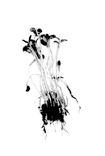About
Provisions
We explore food’s role in sustainability and its profound impact on our well-being. We promote mindful eating, foraging, regenerative agriculture, and local food systems, underscoring food’s influence on our health and our connection to the natural world.
Why Foraged Foods?
Foraging is more than a method of sourcing ingredients—it is an act of rewinding the human experience. In today’s world, where the majority of food is processed and disconnected from its origins, foraging brings us back to the fundamentals. It requires us to engage with the land, understand the seasons, and build a relationship with the natural ecosystems around us. By using foraged foods in our work, we aim to communicate a sense of place, time, and respect for nature’s rhythms.
A Return to Ancestral Knowledge
Foraging connects us to a lineage of human survival and wisdom that has been passed down through generations. By embracing these ancient practices, we tap into a knowledge system that values balance and reciprocity with nature. Every wild mushroom, leaf, or berry reminds us of a time when humans lived in harmony with the earth, taking only what was needed. In a world driven by convenience and excess, we advocate for a return to simplicity and mindfulness in what we consume.
Sustainability Through Foraging
Foraging is inherently sustainable. It encourages us to slow down, observe, and appreciate what the land offers naturally. By using wild foods in our menus, we not only reduce our dependence on industrial agriculture but also celebrate biodiversity. These ingredients are hyper-local and low-impact, grown without pesticides or artificial inputs. They represent the abundance of nature that thrives when we work with the land rather than against it.
Communicating Through Taste
By incorporating foraged ingredients, we tell a story of connection and care. These ingredients carry with them the taste of the earth—the soil, the rain, and the wind that shaped them. By introducing people to the flavours of foraged foods, we invite them to experience the landscape in a new, intimate way. It’s an invitation to slow down, savour, and reflect on the relationships between nature, food, and ourselves.
What We Aim to Communicate
Through foraging, we are not just feeding people; we are challenging the way they think about food. We want people to question where their food comes from, to understand the impact of their consumption on the environment, and to explore the possibility of living more harmoniously with the planet. By bringing foraged foods to the table, we offer a reminder that true abundance doesn’t come from supermarkets or mass production—it comes from the soil beneath our feet and the wild spaces we often overlook. Foraging is our way of showing that nature provides everything we need, if we only learn to see it.
Inspiring a Mindful Relationship with Food
By experiencing the taste of foraged foods, people can begin to form a more mindful relationship with what they eat. We aim to inspire a deeper respect for the resources behind every meal, encouraging participants to see food not as a commodity but as a sacred offering from the earth. Through this, we hope to instill a sense of gratitude and foster a community that values sustainability and interconnectedness.
Reindeer Moss

Reindeer moss is a type of lichen found in the northern regions, known for its resilience in cold, harsh climates. Foraging for reindeer moss requires patience and an intimate knowledge of the ecosystems where it thrives, typically in forested areas with a cool and damp environment.
The collection of this moss has deep roots in traditional northern cultures, where it was historically used as food by both humans and animals—particularly by reindeer, hence its name. In survival situations, indigenous people would collect it, soak it to remove bitterness, and use it as a carbohydrate-rich food source. In its modern culinary use, reindeer moss is often foraged sustainably, ensuring that it is collected without disrupting the delicate balance of its natural habitat. Once harvested, it is carefully prepared through a process of cleaning and infusing. In this version, the moss is infused with sugar, softening its natural bitterness and bringing out a light sweetness that contrasts its crisp texture. The infusion allows the moss to absorb the sugar, giving it a subtle, natural sweetness, while maintaining its delicate structure. This preparation elevates the humble, wild moss into a refined culinary creation that connects the eater directly to the landscape from which it came.
Why is it good?
Reindeer moss is rich in minerals and is known for its detoxifying properties. Its light, crunchy texture and mild sweetness offer a unique sensory experience, inviting a mindful approach to eating. By foraging and incorporating reindeer moss into a dish, we also tap into a sustainable, low-impact source of food, which requires no farming, fertilisers, or chemicals. It exemplifies how we can draw from nature's raw offerings to create something nourishing and full of life.
History and Tradition
In traditional Sámi cultures of the Arctic, reindeer moss was often part of the food chain, both for the reindeer herded by the Sámi people and occasionally as a human food source in times of scarcity. The relationship between the Sámi, the reindeer, and the moss reflects a deep connection to the land, demonstrating how closely intertwined food and survival can be. The modern-day use of reindeer moss in cuisine brings this historical legacy into contemporary practice, where wild foraged ingredients are celebrated for their natural, untouched qualities.
Infused Reindeer Moss with Sugar and Black Salt Flakes
This version of reindeer moss is infused with sugar to balance its natural bitterness, creating a crisp yet slightly sweet bite. After cleaning and preparation, the moss is soaked in a sugar solution, preserving its delicate texture while enhancing the subtle flavours. Black salt flakes are then added to the dish, introducing a smoky, mineral note that contrasts with the sweetness. The salt also adds a striking visual element and a coarse texture that complements the lightness of the moss, creating a dish that is both flavourfully complex and visually engaging.
Reindeer Moss with Leftover Leek Powder
In another variation, the moss is coated in leek powder made from leftover leek greens, embodying a zero-waste approach. The leek greens, often discarded in kitchens, are dehydrated and ground into a fine powder, then dusted over the moss. This adds a rich, umami flavour that contrasts the natural texture of the lichen, while also embracing sustainable cooking practices.
Reindeer Moss with Waste Tomato Powder
A third version features a coating of waste tomato powder, made from leftover tomato skins and pulp that are dehydrated and ground into a tangy, flavourful dust. This gives the moss a vibrant, slightly acidic edge that complements its natural crispness, creating a dish that not only tastes of the earth but also reduces food waste, demonstrating how every part of an ingredient can be repurposed.
Fermented Sweet Pine Cones

Rowanberry-Clay Salt
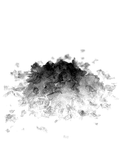
Forest Syrup from Fallen Branches & Bark
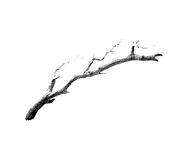
Buckwheat microgreen

Old Pine Needle Salt
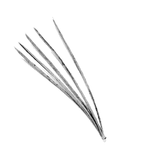
Red Deadnettle microgreen
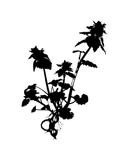
Wild Juniper Berry & Sprout Powder
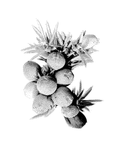
Cress microgreen
